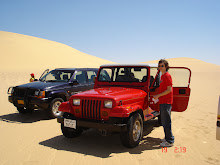Today's class was all about the Disney version of the story, and how the many characters, themes and events were reshaped to reflect Walt Disney's vision of the tale. The discussion once again brought up many ideas and concepts, and seemed very successful overall. I'll try and outline some of the key points we discussed in today blog, many of the concepts were touched on in great detail and left us discussing till we had to be stopped for lack of time.
It's obvious that the original story of Cinderella needed to be adjusted in order to be viewable for children. Walt Disney needed to change many formalities to make this a Disney movie, often these changes can be subtle and go about unmentioned throughout the story. An example of this would be the birds that would wash Cinderella in the morning, and how they had to all be female so the story would not seem perverted or false in its moral. Other changes Disney made to the tale do stand out however, and all reflect the classic image we've come to know Disney movies for. These are things like the visual presentation of the characters, and how imagery could be used to really sketch out their individual personalities. Like the many harsh angles and penetrating looks of the evil stepmother, or the gentle, soft and harmonious Cinderella, so beautifully in touch with nature. He really did do a good job that way, creating the right image for each character, and tastefully displaying the innocence he wants us to see in Cinderella without coming across too sexual.
Then came the characters that are classic to Disney movies however, and that really does require a whole separate paragraph as there are always many repetitive details unique to Disney stories. In a way these characters create a sort of familiarity with Disney movies as a whole, although a child might not perceive these, they are recognizable. Examples of this would include the typical Fat/Skinny duo found in so many other Disney movies, in the story of Cinderella we found these characters in Guss and Jack, one being the calm and collected skinny fellow, often bailing out chubby Guss from his outbursts so typical to the overweight character. In a way these stereotypes can be seen as harmful to a child's perspective of people in real life, and might lead them to believe that all overweight people might behave in such a manner. This is a stereotype that is often found in entertainment though, not just in Disney movies. The king and his portrayal in this story is a bit different, today a fat person is not necessarily associated with wealth so much as with unhealthy eating habits and high triglyceride levels. Back in the sixteen and seventeen-hundreds however, an obese man could be seen as wealthy, able to feed himself and others as much as he desires, and in turn being a good provider for a family too. So the kings obesity really is supposed to portray his wealth and not his size.
We then asked the question why Walt Disney chose to portray the moral of Cinderella's story? How a good hearted hardworking being will have good things happen to them eventually. We argued that this message really doesn't fit well with today's society, and that women in similar positions should stand up for themselves and take initiative to control their own lives. So why then did he choose to tell Cinderella's story knowing that he could possibly give many young girls a wrong idea of how to succeed in life. We argued that this movie, being from a large corporation like Disney really can try to set the ideals they would like the end consumer to perceive. With the large audience they reach and the influence they have especially on children, perhaps portraying a moral like that really can benefit corporations in being able to market their products, and attracting the consumer towards what's beneficial to the corporation. Humans however also like to be able to visualize what the past might have been like and how things used to be, otherwise we would not have so many Historians, and so in a way I feel as though these fairy tales are just part of society and the long history
and progress humans have documented so far.
Another interesting topic in our discussion was how Cinderella supposedly had a velvet shoe in the untranslated version of the story, whereas in the English version, it's a glass shoe. It seemed as though that translation had some meaning to it, as though we were suppose to perceive the shoe as Cinderella's innocence and purity, effectively her virginity. Using a glass shoe seems to make a more clear notion towards a girls virginity and how a glass shoe, when broken could never be perfectly restored no matter how hard one tries. Furthermore, when she dances with her Prince at the ball, it is he who guides her so gracefully and protectively through her first dance, also giving us the image of how a woman needs a prince charming to truly give her safety and stability in life.
In conclusion one can really see just how deep these stories can be when analyzed in their full detail, our discussion could have carried on for several more hours, and once again left me appreciating just how useful and educated discussion is when trying to understand the grand scheme of things, especially a story so complex and reworked as Cinderella.

No comments:
Post a Comment